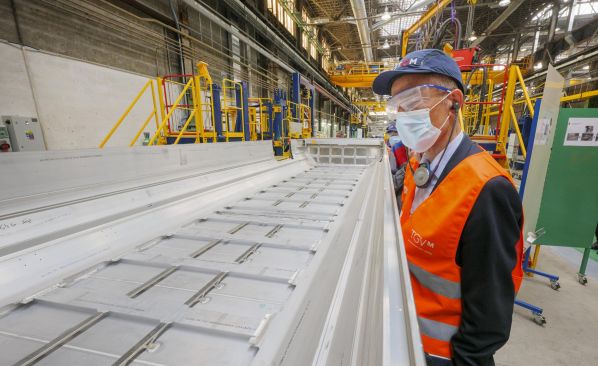Avelia Horizon, which will be called TGV M by SNCF, is a joint initiative of the two companies to design a new a new generation of TGVs. The collaboration started in May 2016 and culminated in SNCF awarding a €2.7bn contract for 100 trains to Alstom on July 26 2018.
Alstom is manufacturing the trailer coaches at La Rochelle and the power cars in Belfort. Alstom says it expects to complete the first power car in September followed by the first trailer coach in November.
Static testing of the first vehicles will begin in summer 2021. Fitting out of the coaches will start in autumn 2021. Dynamic testing should begin in May 2022 with delivery of the first trains scheduled for 2023. SNCF says it expects TGV M trains to enter service in June 2024.
Energy efficient
SNCF says the trains will consume 20% less energy than existing double-deck TGVs thanks to regenerative braking, eco-driving and their aerodynamic shape. The trains will be manufactured from more environmentally friendly materials and will be 97% recyclable.
“The design results in an improved carbon footprint of 32% compared with current trains,” SNCF says. “The acquisition cost is 20% lower than that of conventional trains and maintenance costs will drop by more than 30%.”
Avelia Horizon is modular and can have between seven and nine cars per train, rather than the standard eight on existing TGVs. The interior can be reconfigured in a day between first and second class. The power cars are shorter than on existing TGV Duplex trains and the new trains can seat up to 740 passengers, 20% more than today, within the same 200m length.
SNCF says Avelia Horizon will be the first 100% connected TGV with an optimised onboard internet network capable of integrating future innovations. Real-time transmission of information from various onboard components should increase reliability and make predictive maintenance possible.
The new trains will have 10% more glazing, a modular lighting system and a redesigned air-conditioning system. SNCF says it will be the first TGV entirely designed in collaboration with the wheelchair user’s association UFR. As a result, wheelchair passengers will be able to move around the train independently with access to seats on both levels as well as to the toilets.
“With the future TGV M, we are setting ourselves an ambition for the TGV of tomorrow: to meet the expectations of our travellers ever better, with ever more comfort, flexibility, accessibility, but also environmental excellence,” says Mr Christophe Fanichet, chairman and CEO of SNCF Voyageurs.

